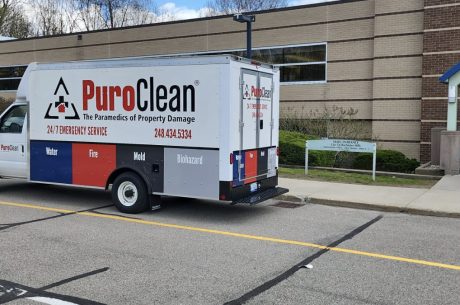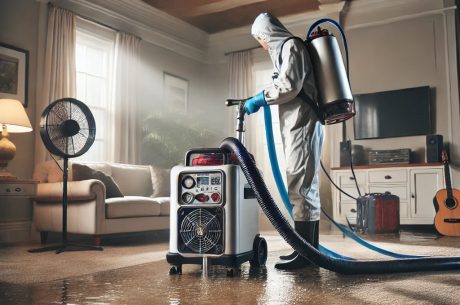Floods are one of the most destructive natural disasters that can lead to the substantial loss of property and families’ emotional and physical health. Every year, flood losses exceed $40 billion in the United States, and they are increasing. Floods are much more complicated and devastating than many people imagine. These systematic actions can make a difference when it comes to the restoration of your home after a flood. This guide will walk through basic measures that should be followed to fix your house in the shortest time possible after a flood.
Steps to Restore Your Home After Flood
1. Prioritize Safety Before Re-Entry
The most important concern when dealing with flood damage is the preservation of your life and that of your family members. When you want to get back into your home, you should make sure that it is safe to do so. Pay attention to signs of structural problems that may lead to a building’s failure. Also, one should be aware of the presence of gas, electrical, or even contaminated flood water that might harm you.
If you have any concerns about the safety of your home, you should speak to professionals, such as engineers or disaster management companies, before entering the property. When you do enter, put on protective apparel such as gloves, masks, and rubber boots to help you fend off toxic compounds that may be present in the water or air.
2. Document the Damage Thoroughly
When you can go into your home, be sure to document all the damages that have been caused in your house. This step will be useful for your insurance claims and any possible disaster aid application you might be making. Take pictures and/or videos of all the rooms and every single piece of property that is damaged. Make sure you take pictures of different perspectives and zoom in on all the areas that were damaged to make sure that you have all the angles.
Besides, it is useful to rely on the list of all damaged items, and their approximate cost as well. It will help you a lot while claiming from your insurance provider for the damages done to your property.
3. Contact Your Insurance Company
The next thing you should do is call your insurance company as soon as possible. Let them know about the flood and give them proof of the losses. Your insurance company will assist you with the steps to take when filing for the claims and may even dispatch an appraiser to come and take a look at the extent of the loss.
This is why you should acquaint yourself with your policy, as not all home insurance companies offer flood coverage. In case you realize that the policy does not cover the damage, you should find out whether there are any disaster relief measures in your region.
4. Remove Water and Start the Drying Process
Standing water is one such disaster that should be dealt with as soon as possible since it has the potential to cause a lot of damage. It also means that the longer water is present in the area, the more damage it will be able to cause to your property, and the greater the chances of mold formation. Use pumps or wet-dry vacuums to extract as much water as you can. When the standing water is finally cleared, fans and other dehumidifying equipment will be used to eliminate moisture in the area. Light a fire and open all the windows and doors to allow fresh air to circulate, which will help speed up the drying process.
Give special focus to the regions that have higher possibilities of getting wet such as walls, floors and furniture. These areas must be well dried to avert formation of mold on the walls and spoiling of stocks on the shelves.
5. Dispose of Contaminated Items
Floodwater can contain anything from sewage to chemicals, and therefore, certain items in your home are a write-off. Many items in a home, such as mattresses, upholstered furniture, and carpets, soak up water and provide a fertile breeding ground for bacteria and molds. Consumer goods should be disposed of properly, following the law of the country or state where the products are being disposed of.
On irreplaceable or expensive items, it may be advisable to contact professional cleaners who deal with flood damage. They will be able to save things that you thought you lost.
6. Clean and Disinfect All Surfaces
After the evacuation of water and other contaminated items, all the areas in the house must be disinfected. Wash visible dirt and stains with soap and water. Later, scrub surfaces with a solution containing one cup of bleach and five gallons of water to eliminate the rest of the bacteria and avoid mold formation.
People need to return to their homes, and for this to happen, the homes have to be safe, which is why this step is important. In this case, it was very rigorous, washing all parts of the house, including the walls, floors, household appliances, and any other items that were in contact with the floodwater.
7. Hire a Licensed Electrician
Water and electricity do not mix; they are a deadly cocktail. Regarding electrical systems, if flood waters reach the electrical system, a licensed electrician must check your home before the power is restored. Any electrical wiring, outlets, or appliances damaged by water are very dangerous in the sense that they can cause fire outbreaks if not reconstructed.
An electrician will make sure that all electrical equipment is dried properly and in good working condition before reconnecting your home to the power.
8. Address Mold and Mildew
Mold development can start as early as 24 to 48 hours after a flood, which is why it is also a great concern in the restoration process. Mold not only destroys properties but also has a highly negative effect on one’s health, causing breathing problems and allergies.
Check your home inside and out for mold, especially under the sink, in the bathroom, or behind walls that have been previously flooded. If you find mold, perhaps you can wash small sections with water and bleach yourself. However, in the case of large-scale molds, it is wise to employ the services of a professional mold remediation company to eliminate all molds.
9. Repair Structural Damage
Floods may cause deterioration of your home’s structure, including the foundation, walls, and other structures within or around your home. An experienced contractor should check out the house and repair any issues that may be present in the structure. This is an important step to take to stabilize and safeguard your home for a lengthy period of time.
10. Replace Damaged Flooring and Walls
Water that floods an area can be very destructive to floors and walls, especially if made of wood, laminates, or dry walls. Often, these materials will have to be removed and replaced so as not to contribute to mold formation or cause additional deterioration of the structure.
If the floor of a building is worn out in some parts, it is advisable to use tiles or vinyl since they are water-resistant during floods. Choose mud-resistant drywall for walls to prevent future problems with mold.
11. Install New Insulation
As much as insulation protects structures, insulation exposed to water is as good as useless as it may be a breeding ground for fungi. After this, replace the insulation in the walls to enable the walls to conserve energy and avoid moisture damage in the future.
12. Landscape to Avoid Future Flooding
After fixing your home’s interior, It is recommended that you check on the exterior part that might have contributed to the flooding. A proper grading of the soil around your home should be done to guarantee that water flows away from your home. You will also find that installing other drainage systems, like the French drains, is necessary to avoid future occurrences.
13. Consider Professional Restoration Services
In case of extensive damage, it is wise to seek the services of professional restoration companies. Large-scale repair services require professional companies like PuroClean of Rochester Hills that are equipped, knowledgeable, and experienced in handling such jobs. Hiring the services of a professional is advantageous in that it will save time and stress and guarantee the right work done on your house. When you hire professionals, you are assured that all problems will be solved and that includes removal of water and fixing of all the structural problems that were caused by the water damage.
Conclusion
It is not an easy task to clean your home after a flood, and it takes a lot of time to restore it, but with adequate measures and materials, it is achievable to revive the house to its initial state. Following these steps and with professionals like PuroClean of Rochester Hills, restoring your home to a safe environment that will provide comfort to all inhabitants is possible. Be safe, write down all the observations, and take the time to do things properly. You will pull through this debacle and reconstruct a much better house than the previous one.




 PuroClean of Rochester Hills
PuroClean of Rochester Hills